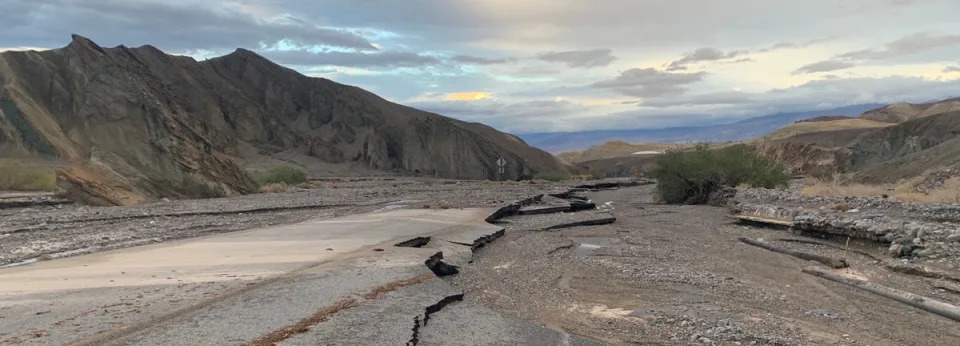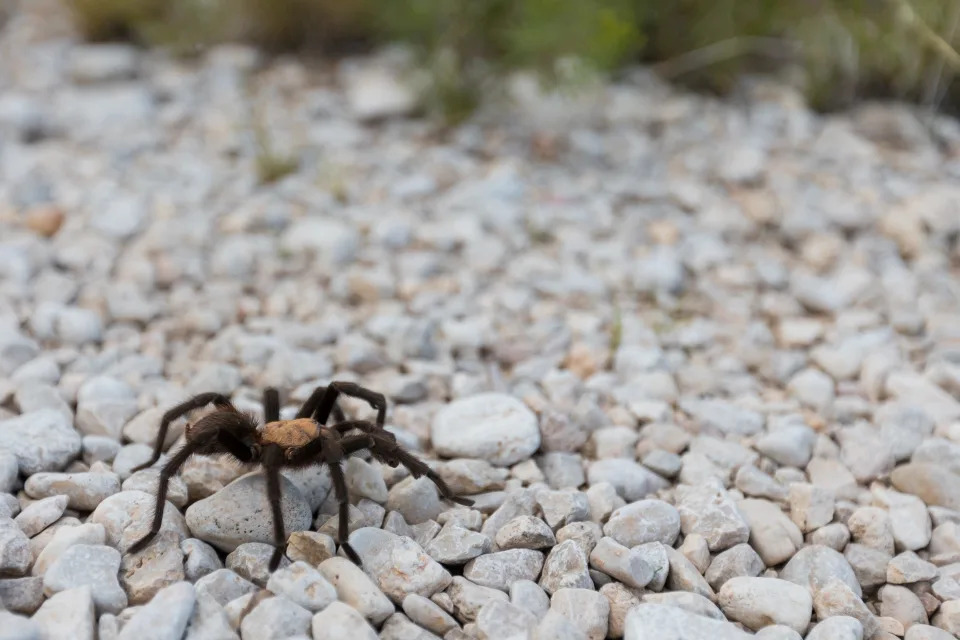A tarantula has been blamed for causing a collision which left a person hospitalised – but the spider fled the scene unscathed.
A Swiss couple on vacation were driving through Death Valley National Park on Saturday when they hit the brakes in their camper van to avoid hitting a tarantula crossing the road.
While their kind act left the spider unharmed, their sudden braking caused a 24-year-old Canadian motorcyclist to crash into the back of the rented camper van.
The man was transported by ambulance to Desert View Hospital in Pahrump, while the tarantula “walked away unscathed,” said the National Park Service.
It is unclear what condition the motorcyclist is in. The Independent has contacted the NPS for further information.
“Please drive slowly, especially going down steep hills in the park,” warned Superintendent Mike Reynolds.
Mr Reymolds was the first NPS employee on scene at the accident.
“Our roads still have gravel patches due to flood damage, and wildlife of all sizes are out.”
Death Valley is only partially open at the moment after the majority of its roads were closed due to flash flooding from Hurricane Hillary.

The hurricane, which hit southern California in August, has severely impacted the roads in the park.
Heavy rain flooded the area, causing a parkwide closure. Some areas have been churned up by the rain, leaving muddy brown residue in its wake. A few roads opened on 15 October.
While much of Death Valley’s wildlife has been disturbed by flooding, tarantulas are often seen at this time of year as its their mating season.
During the fall, eight to 10-year-old tarantulas leave their burrows, where they spend most of their lives, to search for a mate.
After mating, the female sometimes kills and eats the male. Even if she chooses not to kill him, the male will usually only live a few more months after breeding. Female tarantulas can live for around 25 years, mating multiple times.
Tarantulas are slow-moving and not aggressive to humans. If they do bite, it is not deadly but feels like a bee sting, according to NPS.
This is not the first time a spider has been at the centre of a collision. In 2019, an arachnophobic woman in New York suffered a leg injury after she spotted a spider on her front seat and crashed her car.
Source: The INDEPENDENT
What is a tarantula?

Tarantulas are the largest spiders in North America, according to the NPS. Adult tarantulas average five inches in length and when spread out, their leg span is up to 11 inches, says the National Wildlife Federation. Besides its eight legs, a tarantula’s body includes a cephalothorax (a fused head and thorax, or chest) and an abdomen.
Tarantulas are covered with thousands of fine hairs ranging in color from tan to dark brown. These hairs are what these arachnids use in hunting. Their diet mostly consists of insects like beetles and grasshoppers and tarantulas in the desert may also devour small lizards, mice, and even scorpions.
‘Literally one of a kind’: Guadalupe Mountains National Park is Texas’ best kept secret
Tarantulas spend most of their long lives in underground burrows, says the NPS. People are most likely to encounter them in the fall, when 8- to 10-year-old male tarantulas leave their burrows to search for a mate. The female sometimes kills and eats the male after mating. However, even if she doesn’t kill him, the male tarantula rarely lives more than a few more months. On the other hand, female tarantulas can live for 25 years, mating multiple times.
“Tarantulas are slow moving and nonaggressive,” says the NPS. “A tarantula’s bite is reported to be similar to a bee sting and is not deadly to humans.”
Source: USA Today









